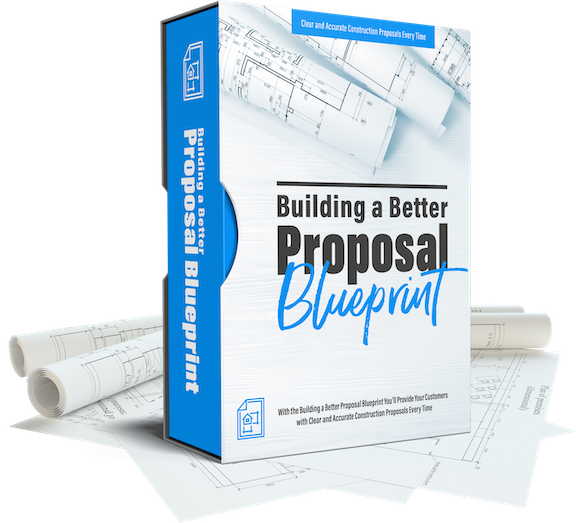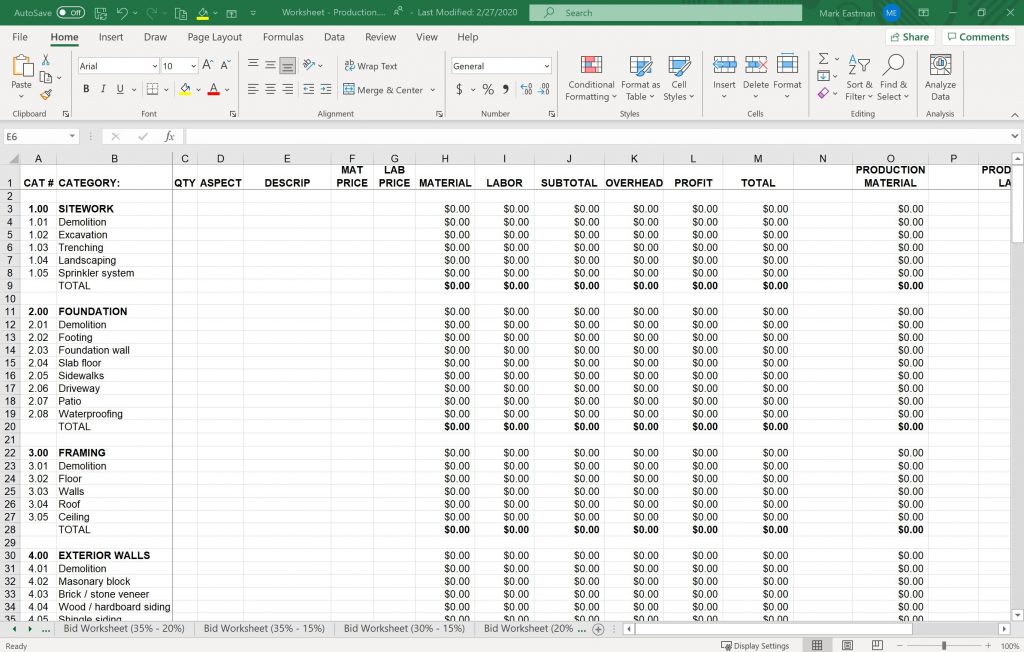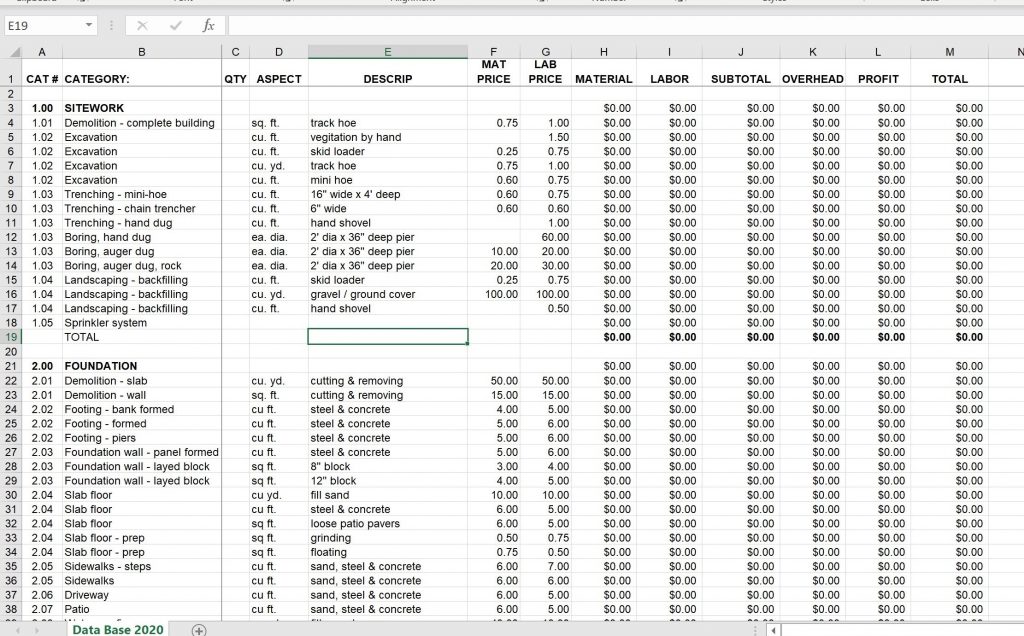Having a System for Proposals, Is Better Than Just Guessing

It’s week six of learning the Blueprint for Building a Better Proposal system. As time consuming as learning new things is…John is beginning to see the benefits this proposal system will provide.
Just like building a house using a system that repeats routine actions prevents time being spent rethinking and guessing at how to do things. This system will do the same thing when preparing proposals.
As they settle in and begin the meeting, Gene tells John, “Let’s take a quick look back at what we’ve covered so far. We started by asking ourselves some foundational questions. Next, we discussed the common mistakes contractors make when bidding. Then we went over the system and it’s parts. The last couple of weeks we’ve worked on gathering information and turning that info into a Scope of Work. Today we’re going to start working on…
Pricing the Project
In this step we will determine the price for the project. Communicating a clear description of the project took place in the Scope of Work which is important in avoiding misunderstandings. Accurate pricing is equally as important.
Poor communication will cause heartache, poor pricing will cost you money.
Open the Worksheet template. This blank Worksheet is where you will paste the information from the Data Base as it relates to each of the specific tasks of the project.

The Worksheet template has six different options for overhead and profit ranging from 20% overhead and 10% profit to 40% overhead and 20% profit. You can use whichever of the six options works best for you on the specific project you’re working on.
Typically, larger projects, i.e. new construction, large renovations, remodels or large additions will use smaller percentages, while small projects will use bigger ones. You can use whichever works best for you. These percentages can be adjusted after you have finished the pricing if you want them to be increased or decreased. These documents can be modified with custom percentages as well.
Open the Data Base and prepare to copy the appropriate content into the correlating cells of the Worksheet of the project you are working on. Use the previously written Scope of Work, to determine which of the categories, specific to the project need to be used from the Data Base and copied to the Worksheet.
If more than one item for a specific task is needed, for example shingles, synthetic underlayment and metal edging, flashings. These individual items will be entered separately then added together to create one price for roofing.
You can add as many additional rows as you need, just be careful to keep the formulas intact by filling the content of the existing row to the new ones.
How to determine which tasks should be inserted into the Worksheet
Most of the tasks on the Data Base have options; determining which to use, will depend on the specifics of the project. For example, how is the excavation, trenching and landscaping going to be done…with a skid loader, mini excavator or by hand?

Once it’s determined which methods, actions or materials are to be used for a specific project, copy the pertinent cells from the Data Base and paste them to the Worksheet.
After the pertinent information from the Data Base has been placed on the Worksheet it’s time to…
Enter the quantities of the work to be done.
Fill in the quantity needed to do the work for each item on the Worksheet. This may be lineal feet, square feet, square yards, cubic feet, cubic yards or numbers of pieces. Once this is completed for all the categories, you’ll have prices for each task of the Proposal.
This system offers a constant repeatable process for preparing accurate proposals and is the difference between making money or losing money on construction projects.”
Gene looks at John and asks, “Well, what do you think?”
“Well, I thought my head was spinning before today. Now I’m getting dizzy.”, replied John with a grin.
“I know it seems like a lot, but it really isn’t, once you get started using it.” Says Gene reassuringly. “Experiment with it this week. Call if you have any questions. Next week we’ll bring everything you’ve learned together into a proposal ready to be presented to the customer.”
Guessing is not a good way to build a profitable business.

Previous posts in this series –
What is “business clarity” and how do you find it?
Learning How to Get a Construction Project Started Out Right
It’s Time for the First Meeting
Being Aware of the Common Bid Mistakes is the Best Way to Avoid Them
Constructing a Building is Better with a Plan, a Proposal is No Different
A Good Construction Proposal Starts by Asking the Right Questions
What is a Construction Scope of Work and Why Do You Need One?

